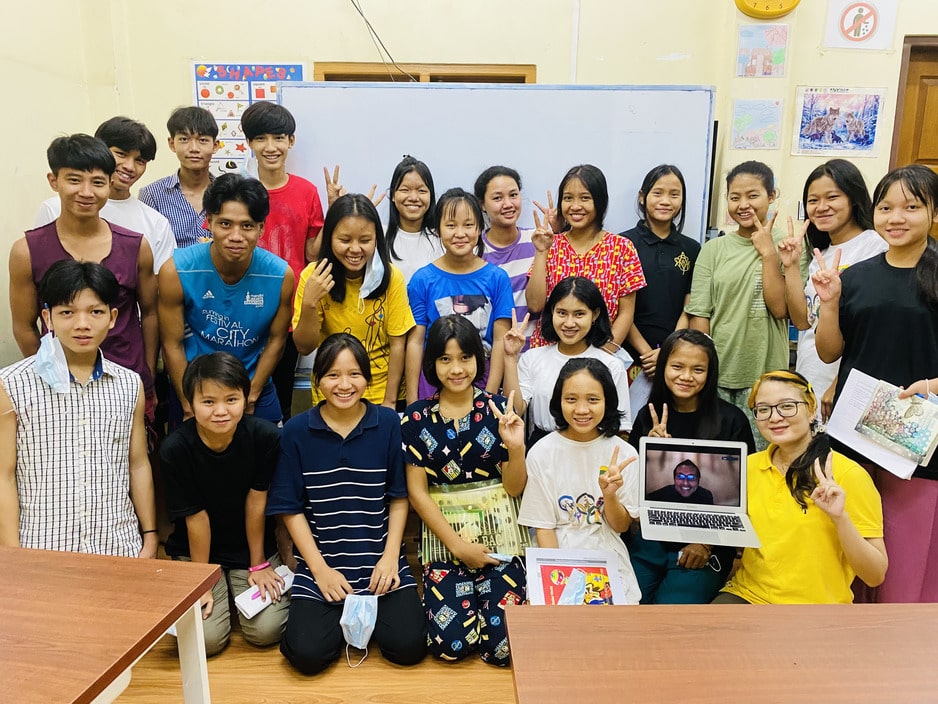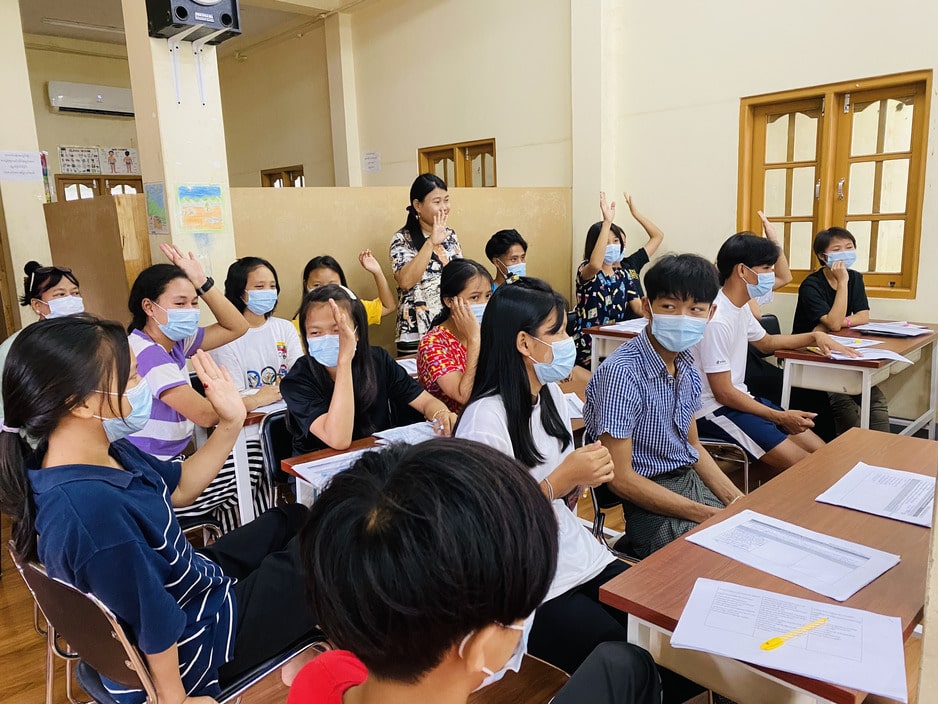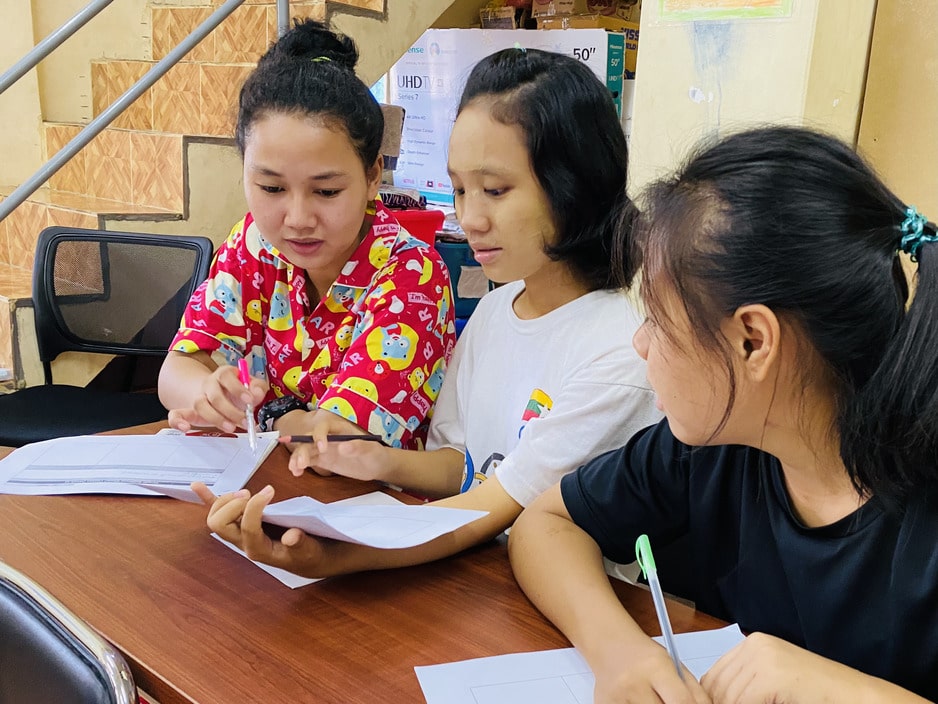In the second half of 2022, a variety of STEAM education were able to be carried out with the support of Dai-ichi Life Myanmar at Dream Train.
This time, we would like to introduce the two-day-lesson, “What is Business? and A Practical Course to Learn from Entrepreneurs”.

Mr. Tamura (Tam-san) of Kids Labo, an IT/STEAM education start-up company, who obtained his MBA in Dubai, was in charge of this course.
Eleven students from Grade 10 (high school students) and nine students from Grade 9 (junior high school students) children who are from 14- to 20-year-old participated in the course, learning the essence of business from Tam-san.
Rules of the Course
The course began with an explanation of the rules.
This was something that the children felt was different from the courses they had taken in the past.
Mr. Tamura started the course by saying like the followings:
“Forget about the school rules.”
“What is usually nonsense is usually OK today!”
“Tam is a learning partner, not a teacher!”
“There are no wrong answers.”
Mr. Tamura also gave a unique self-introduction.
In his introduction, “Not only does he have a brilliant background, having traveled to more than 80 countries, and holds a Bachelor of Social Science and MBA degrees, but he also introduced some of the failures and setbacks he has experienced, such as once getting a zero on a chemistry test which made some children smile and relax after hearing this.
After his introduction some of the children seemed relaxed and happy.
The image of business in everyone’s mind
At the beginning of the lecture, three questionnaires were conducted on what each child thought of business, using Menti, a function that allows children to collect their answers and ideas. Here are the children’s answers and some tips from Tam-san.
Question 1: What is everyone’s idea of business?
Children’s answers:
International trade, transportation (logistics), making things that don’t exist, making money, goods and services, jobs that bring in money, competition for smart people.
Tam-san ‘s Hint:
The answer “competition for smart people” is half correct and half incorrect. Because it’s not a competition where the smartest people always win!
It is about learning the rules of business and gaining experience.
Question 2: What is the job you would like to do in the future?
Children’s answers:
Electrical engineer, IT programmer, doctor, farming, fishing, company management, mountain mining, photographer, travel agency, interpreter, work to improve the country (diplomat), police, K-POP idol, singer, designer, etc.
Question 3: Do you think doctors and teachers are businesses?
Children’s Answers:
Answers were almost evenly split.
Tam-san ‘s hint:
Actually, both are correct. If you have your own practice, it would be a business.
If you are a public doctor or teacher, maybe it is not a business.

Understanding Business
Now that each child has developed an image of a business, the question that people around the world have been exploring so far, “What is a business?” The children were then introduced to a way of thinking that is one of the answers to the question that people around the world have been asking: “What is business?”
1.Business is a problem solving.
Business always starts with a problem.
For example, if you are hungry, what do you want to eat? What is your budget? With whom?
Solving each of these problems is a business.
Problem can also be paraphrased as Needs or Wants.
With these words, the children learned that selling what you think is good is not business, but that it is important to respond to the Problem, Needs, and Wants that exist within the recipient.
2.Business has a customer.
For example, if you open a “mohinga (noodle) shop,” the national dish of Myanmar, who is your customer? Gender? What is their age? Are they financially affluent? What are their taste preferences? How often?
Thinking in more detail…
What toppings do you like? What percentage of people put an egg in it? Do they put fried beans?
In this way, it is important to bring up the customer image.
3.Business must be different from competitors.
If there are three “mohinga stores” that all offer the same taste and service, but one sells noodles for 500ks less, most customers will go to the cheaper mohinga store.
In other words, if the conditions are the same, business will become a price war.
Also, a cheap store will not be famous and will not be able to make a lot of profit because of its low-price setting.
The children learned that they must consider the strengths of the business they came up with and what differentiates it from the competition.
4.Business must convince customers.
The children came up with many ideas on how to publicize their business.
For example, they could use social networking sites, give out brochures, let neighbors know about the business, give gifts on opening day, invite influencers, etc.
At Dream Train, children do not have the opportunity to go shopping or surf the web on a daily basis. However, we were surprised to see that the children already have many marketing ideas.
Experiencing society through group work
There were several group work sessions during the course.
What the children learned through the work was not only knowledge about business, but also how to interact with “people” who make up society.
Tam-san said “At the world’s top business schools, they place great importance on working collaboratively with others. This is because, fundamentally, in business you have to interact with people, and you need to help and collaborate with people from various backgrounds.”
Some of the children seemed bothered by the group work, which did not go well, but after listening to Tam-san’s words, they seemed to be deeply convinced.

My Own Business
At the end of the course, the children made a presentation about the business they had created through the two-day course.
They were not told the correct answer, but rather, they thought about the hints given to them, connected their knowledge, and created their own original business.
Through this experience, we believe that the children themselves were able to see the effectiveness of their knowledge in conducting business and how to sublimate it into a “strategy” in their minds.
The following is Tam-san ‘s final message to the children.
“I am confident that all of you will become great business people.”
We would like to thank everyone from Dai-ichi Life Myanmar and to Tam-san of Kids Labo for being as an instructor.

